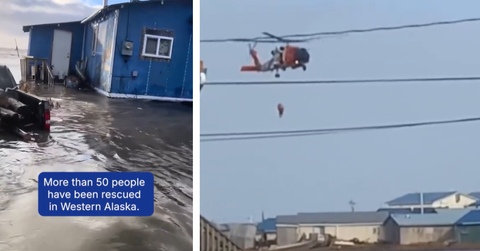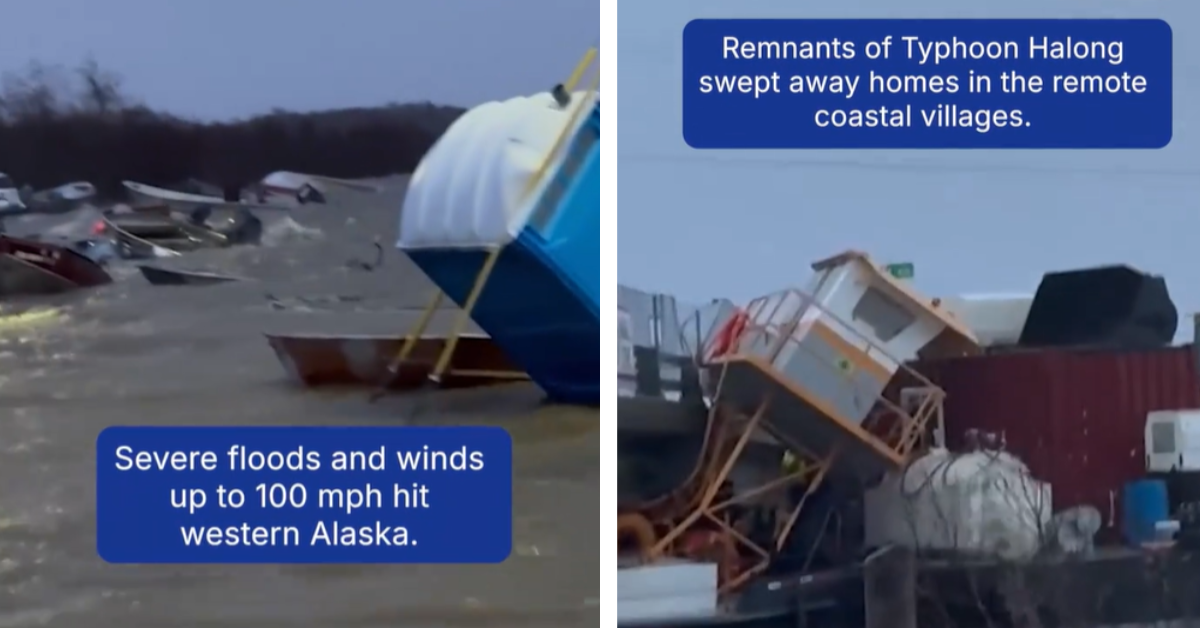Alaska Residents Still Under Water After Major Flooding Hit the Coast
There are still two people unaccounted for.
Published Oct. 16 2025, 2:22 p.m. ET
In October 2025, portions of Alaska's western coast were rocked by the remnants of a powerful typhoon that left whole villages underwater and even washed several homes away.
After the wind died down and rescuers were able to access the region, they discovered that things were far more dire than they had first realized. In fact, one lawmaker called the state of a specific town "catastrophic" in an update, noting that the amount of damage done could not be understated.
Days after the storm moved out, people are still left wondering what is happening in Alaska as thousands of people find themselves displaced from their homes with virtually nowhere left to turn.
You can find out more about what's being done to help these Alaskans recover and rebuild after the devastation, including what some experts say caused the region to get hit so hard by the typhoon that previously made a pass by Japan as a Cat. 4 storm.
October 2025 storm causes massive flooding in Alaska.
During the weekend of Oct. 10, 2025, what was left of Typhoon Halong hit the coastal villages of western Alaska. The intense winds and rains brought record-breaking flooding to the area, which hit the rural and low-lying areas of the region particularly hard, sweeping some homes into the ocean, some with people still trapped inside.
In other areas, high winds caused injuries to those who were hit by flying debris. Days after the storm cleared out, search and rescue operations were underway.
As of Oct. 16, officials reported that there were still two people unaccounted for, according to ABC News. Additionally, the publication reported that there was one known fatality as well.
An estimated 1,500 people have been displaced by the storm, and they are now trying to find shelter. In the town of Kwigillingok, 350 people crammed into a makeshift shelter, according to CBS News. In the more populated town of Bethel, shelters have reached capacity.
Officials have been trying to help those who still remain trapped in the more rural parts of the state, completing rescues using helicopters.
While some of these coastal areas were already pretty remote, others could only be accessed by air or boat before the storms. This remoteness seems to be impacting search and rescue efforts, which means that the number of missing could increase as more areas are accessed.
Why was the Alaska flooding so severe?
As the weather cleared up, many people started looking for the reason things took such a disastrous turn with the storm. According to ABC News, many are blaming the Trump administration's funding cuts, which gutted the programs that would've helped the region prepare for the storm.
As an example, Kipnuk's $20 million grant designed to help the rural area protect a boardwalk that helps residents navigate the low-lying area was cancelled, preventing upgrades from being made.
And while ABC News notes that it's unlikely that any one project could've prevented the damage done by the typhoon, it does limit the community's ability to prepare and adapt to the changing conditions that they will face as a result of climate change, which can make storms like the one that hit more frequent and intense.

